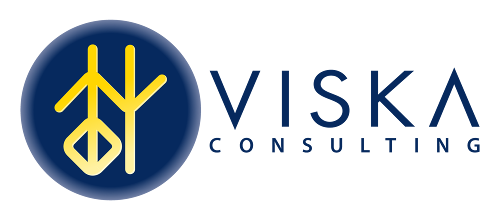As part of our Framework Series – we are looking at different models for decision making. In our previous article about the OODA Loop, we discussed how Observe, Orient, Decide, and Act can work for your business. Now we take a look at the WRAP Framework.
Decision-making stands as the cornerstone of success for CEOs and C-suite executives. The choices made at the helm of a company not only chart its course but also define its resilience in the face of adversity. Amidst this high-stakes environment, the WRAP framework, conceptualized by renowned authors Chip and Dan Heath in their book “Decisive: How to Make Better Choices in Life and Work,” emerges as a beacon of guidance. This framework distills the essence of strategic decision-making into four actionable steps: Widen Your Options, Reality-Test Your Assumptions, Attain Distance Before Deciding, and Prepare to Be Wrong. In this article, we delve into the intricacies of the WRAP framework, unraveling how each step can revolutionize decision-making processes within your organization.
Widen Your Options
The journey to exemplary decision-making begins with expanding your horizon of choices. ‘Widen Your Options’ urges leaders to break free from the tunnel vision that often plagues high-stakes decision-making. In their book, Chip and Dan Heath criticize the commonplace ‘whether or not’ approach, which limits the potential solutions to a binary choice. Instead, they advocate for a more expansive view.
In practice, this involves seeking diverse perspectives and considering multiple alternatives. For instance, when faced with a challenging market scenario, consider a spectrum of options that might include partnerships, diversifications, or even targeted research and development instead of a singular aggressive investment or a conservative approach.
A study by Paul Nutt at Ohio State University cited in ‘Decisive,’ revealed that only 29% of organizational decisions taken from a single option were successful, compared to a 52% success rate when multiple options were considered. This statistic underscores the importance of broadening your decision-making landscape. As a leader, encourage your teams to brainstorm extensively and challenge the status quo. This breeds innovation and significantly enhances the probability of making more informed and successful decisions.
Reality-Test Your Assumptions
The second pillar of the WRAP framework, ‘Reality-Test Your Assumptions,’ challenges leaders to scrutinize the underlying assumptions that often unconsciously guide their decisions. Chip and Dan Heath emphasize the perils of confirmation bias, where decision-makers seek out information that supports their pre-existing beliefs and ignore contradictory data. This step is about actively seeking disconfirming evidence and viewing your choices through an unbiased lens.
In a business context, this can be achieved through techniques like considering the opposite, where leaders deliberately look for reasons why their initial assumption might be wrong. Another effective strategy is to conduct small experiments or pilots to test the validity of assumptions. For example, before rolling out a new product line company-wide, a CEO might pilot it in a select market to gather real-world feedback and data. This approach not only mitigates risk but also grounds decisions in reality rather than speculation.
Renowned for its rigorous decision-making processes, the technology giant Intel employs a method they call ‘disagree and commit.’ This approach encourages team members to openly express dissenting opinions and doubts during the decision-making process. Once a decision is made, however, everyone commits to it wholeheartedly, regardless of their initial stance. This culture of challenging assumptions and then uniting behind a chosen path exemplifies the essence of reality testing in a corporate setting.
Attain Distance Before Deciding
The third step, ‘Attain Distance Before Deciding,’ deals with the emotional and social pressures that often distort clear thinking. The Heaths advocate for achieving psychological distance from the decision at hand to gain clarity and objectivity. This is crucial in high-stress business environments where emotional attachments and short-term gains can cloud judgment.
One practical method for attaining distance is the 10/10/10 rule: How will you feel about this decision 10 minutes from now? 10 months from now? 10 years from now? This temporal shift in perspective can reveal new insights about the long-term implications of a decision, often overshadowed by immediate concerns.
Another strategy is to seek external perspectives. As a CEO or a senior executive, consulting with mentors and industry peers or even stepping into the shoes of your stakeholders can provide invaluable insights. Imagine advising a friend on the same decision or considering how your successor might handle the situation. These techniques dilute the influence of present emotions and promote a more balanced and strategic approach to decision-making.
Prepare to Be Wrong
The final step of the WRAP framework, ‘Prepare to Be Wrong,’ addresses the inevitable uncertainty and unpredictability in decision-making. Chip and Dan Heath stress the importance of anticipating and planning for various outcomes, including less favorable ones. This step is about humility and foresight, recognizing that even well-thought-out decisions can have unforeseen consequences.
In the business realm, this translates to developing robust contingency plans. A practical approach is to conduct a pre-mortem analysis — envisioning a future where the decision has gone wrong and working backward to understand what might have led to that failure. This exercise highlights potential pitfalls and encourages proactive planning to mitigate those risks.
For instance, when a company decides to enter a new market, it should not only plan for success but also consider scenarios where the market does not respond as expected. This could involve setting aside resources for additional marketing, planning for adjustments in the product or service, or even an exit strategy if the venture proves unsustainable.
Jeff Bezos of Amazon advocates for a concept he calls ‘disagree and commit’ in his 2016 letter to shareholders. This philosophy encourages team members to voice their disagreements but commits to the decision once it’s made, enabling the organization to take calculated risks while being prepared for different outcomes.
Conclusion
The WRAP framework by Chip and Dan Heath offers a comprehensive guide for CEOs and business leaders to refine their decision-making processes. By widening options, reality-testing assumptions, attaining distance, and preparing to be wrong, leaders can navigate the complexities of business decisions with greater confidence and clarity. Implementing these steps can lead to more innovative, strategic, and successful short- and long-term outcomes.
As the business landscape evolves, making decisive, well-informed choices becomes increasingly crucial. The WRAP framework is more than just a decision-making tool; it’s a mindset that empowers leaders to embrace the nuances of their choices and lead their organizations to new heights of success.
You may also be interested in our post on the 5 Whys by Sakichi Toyoda. Check it out here.
Transform Your Decision-Making Today
Navigating the complexities of today’s business environment requires more than just intuition and experience; it demands a structured approach to decision-making that can adapt to the ever-changing market dynamics. As you’ve seen, the WRAP framework by Chip and Dan Heath offers a powerful methodology to enhance your strategic choices. But understanding the framework is just the beginning.
At VISKA Consulting, we specialize in transforming these concepts into tangible results for your business. Our team of experts is adept at tailoring the WRAP framework to your unique organizational context, ensuring that your decision-making processes are not just improved, but optimized.
Whether you’re facing critical strategic decisions, organizational changes, or market challenges, VISKA Consulting is your partner in navigating these complexities with confidence. We don’t just offer advice; we work alongside you to implement practical, effective strategies that drive success.

